Ocala/Marion development: 50K residential units OK’d in past 5 years, most in southwest
More than 50,000 residential units have been approved throughout Marion County in the past five years, and that's only through March. The number does not include nearly 86,000 undeveloped home lots approved decades ago.
The news came during a two-plus hour county commission work session on Monday, a meeting designed to give an overview of what Marion County is facing with the recent surge in commercial and residential development.
The meeting included an update from Kevin Sheilley, president/CEO of the Ocala Metro Chamber & Economic Partnership (CEP), who said 190 people per week (9,880 per year) are now moving to Marion County.
Growth: SW Ocala residents stop, for now, apartments near Saddlewood school
Soaring:Marion County's property value hits a record high of $24.14 billion
Build it, they will come: CR 484 becoming next SR 200 corridor
Marion County's population will likely hit 400,000 in 2024 and 500,000 by 2040. Marion is now the nation's 142nd largest metropolitan statistical area, up six spots in one year, passing the four-county Tallahassee MSA in population.
A population explosion is being fueled by attempts to diversity the area workforce. That has come the way of logistics. Marion has 12.8 million square feet of warehouse space. But with this economic boom comes growing pains.
James Banta, Marion County fire chief, said the county has an immediate need for 10 new fire stations at a price tag of between $3 million and $4 million each. That does not include a recurring cost of $1 million per year to staff each station.
Another issue is roads. In fact, even with the one-cent sales tax, which supports roads and public safety capital needs, Marion County needs $537 million to fund all of its road projects in the next five years. Marion will only have $190 million, a shortfall of $347 million. The road shortfall is nearly $1 billion through 2045.
And then there is school overcrowding and how new schools will be funded, which was not discussed. There was so much information given to the county commission in a short period that many asked to slow down and split topics up on future work sessions.
"I've just got this Thursday, and there's not a lot of time to react or to go out into the community," Commissioner Craig Curry said. "I would like to have more time to have evaluate these things because each one of them are very, very important."
Commission Chairman Carl Zalak said more work sessions will be coming.
"We're going to discuss these today," Zalak said. "And then we're gonna bring workshops back on each one of them."
Two key areas discussed during the work session were development and roads.
66% of residential units approved in past 5 years are in SW Marion
County and city governments have approved 50,784 residential units – homes, apartments, townhomes and condos – since 2016, and 32,475 of those units are located in the southwest quadrants of Marion County and the City of Ocala.
Two-thirds of those 50,784 units can be launched as soon as the developer gets a building permit. Though the other third are in approved developments, the developer must submit a final site plan before launching.
Of those 50,784 units, 25,798 are single-family homes and 24,986 are multifamily units, which include apartments and townhomes. Unincorporated southwest Marion has 17,881 units and southwestern Ocala has 14,594 units approved.
Here is the tally for each quadrant, which includes the same quadrant for the City of Ocala: Southwest, 32,475; Northwest, 8,142; Southeast, 6,975; Belleview, 1,772; and Northeast, 1,420.
And of the 1,801 commerce park and industrial acres on the books, 1,319 acres (73%) are also located in southwest Marion County.
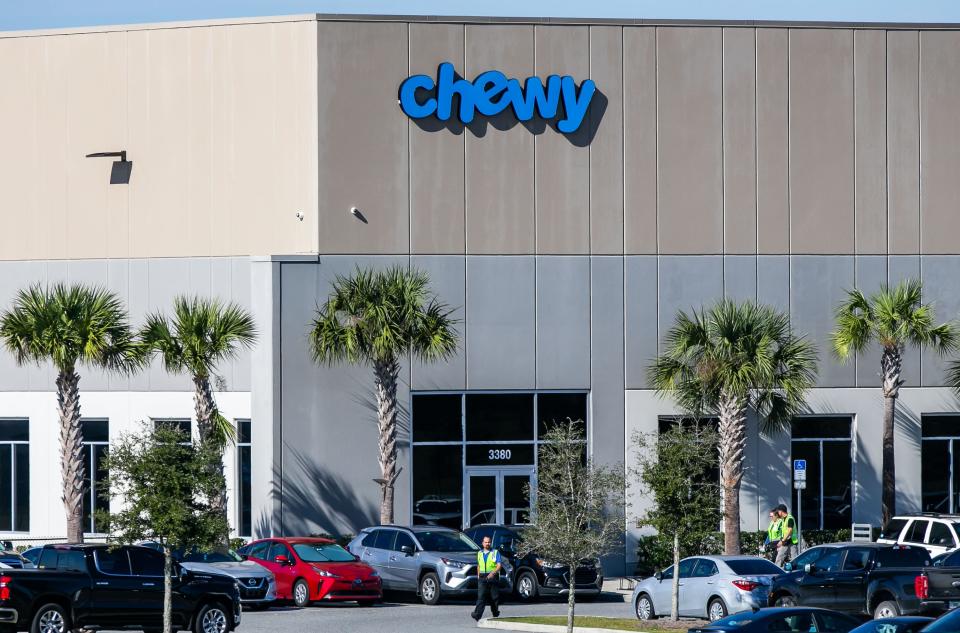
Tracy Straub, assistant county administrator, said that even with the 6,000 or so single-family homes permitted in 2021, only about 66% of those received a certificate of occupancy. The county is also working to provide faster permitting for builders.
"The preliminary numbers are showing we have a housing deficit of 1,700 units," Straub said. "When you see data by our local board of Realtors, they're telling you that houses are selling in less than one month, as soon as they're being put on the market."
To put the explosive growth in perspective, new residents in 2021 created a housing demand of 2,251 residential units. Now there are 190 people moving to Marion County every week. If the average is household is 2.5 people, that means builders need to construct 76 residential units per week (about 4,000 annually) to keep up in 2022.
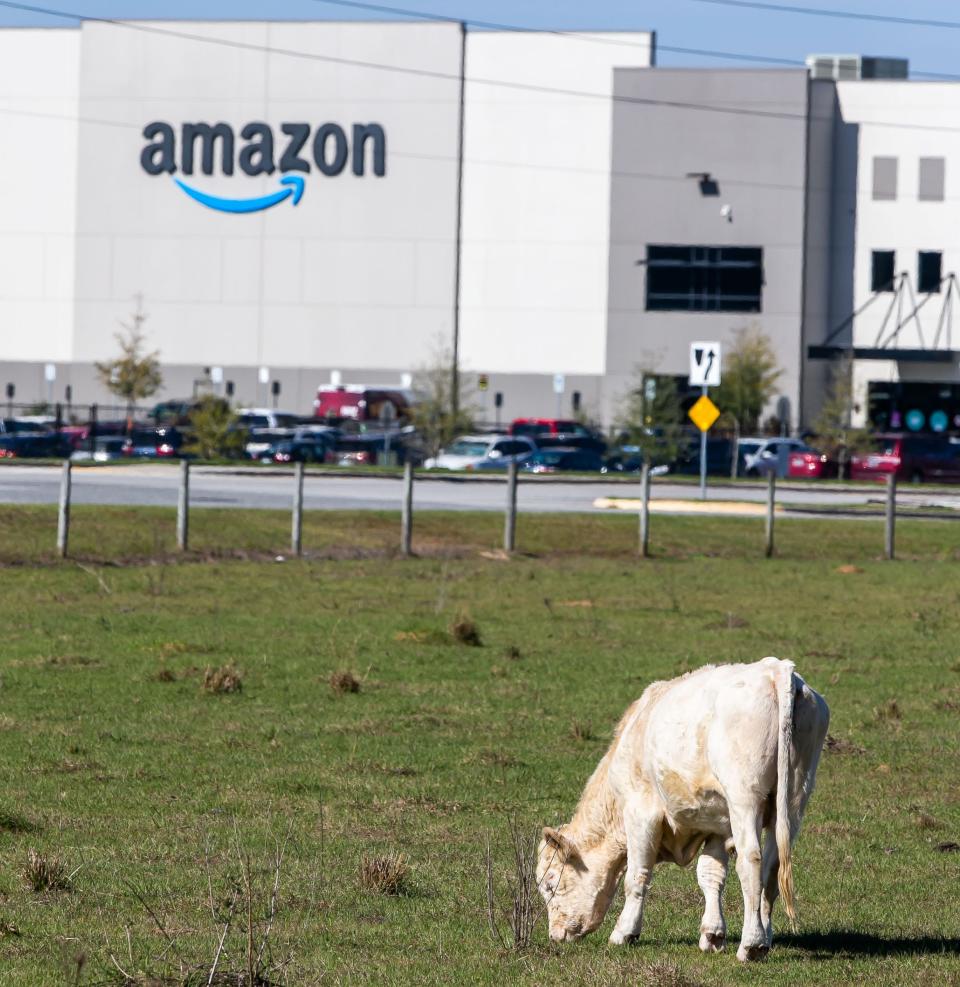
Marion roads program is vital in moving residents around the county
Elton Holland, the county engineer, confirmed that the Southwest 49th Avenue highway project is funded, for the most part. He said that by spring 2023, the four-lane segment from Southwest 66th Street to the 42nd Street Flyover will launch construction.
Holland said another road that is on top of the county's road list is to four-lane Southwest 38th Street, from West Port High School to the planned 44th Avenue project that will connect the flyover to County Road 326.
Holland also revealed that funding is available to begin some intersection improvements at Southwest 27th Avenue, also known as CR 475, at Southwest 66th Street. He said there is a plan to add a turn lane on eastbound Southwest 66th Street.
"It (southbound CR 475) backs all the way up to Trinity Catholic High in the afternoons and in the mornings," said Commissioner Kathy Bryant about the need for immediate improvements at that intersection.
Straub and Holland both explained that road funding plan eliminates the sale tax when it expires in two years.
Straub noted that 27 miles of new roads and eight intersection improvements are planned through 2026-27 at a cost of $190 million. There is a shortfall of $347 million to fund all the roads on the county list during that time.
Long term, there are $1.41 billion worth of road improvements on the list through 2045, but only $517 million are funded.
"Sales tax and impact fees are seeming to be the answer at the moment," Commissioner Michelle Stone said.
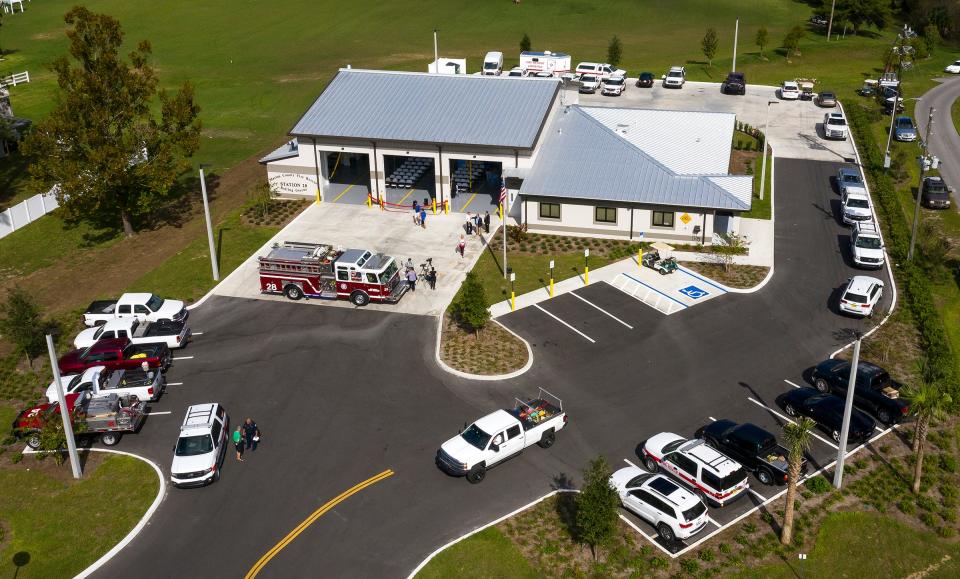
The sales tax also helps to fund Marion County Fire Rescue, which needs 10 new stations now and more as the county grows.
Holland said that discussions need to be had in terms of other problem traffic areas. One is the need for an interchange at Maricamp Road and Baseline Road.
"Because you have to do something to deal with all that growth that's occurring out in the southeast in Silver Springs Shores," Holland noted.
"Those are the types of projects that are out there and the vision of what is your next beltway?" he noted.
Sheilley says Marion wages have risen a third faster than national average
Sheilley said that population experts say Marion County will hit 400,000 in early 2024.
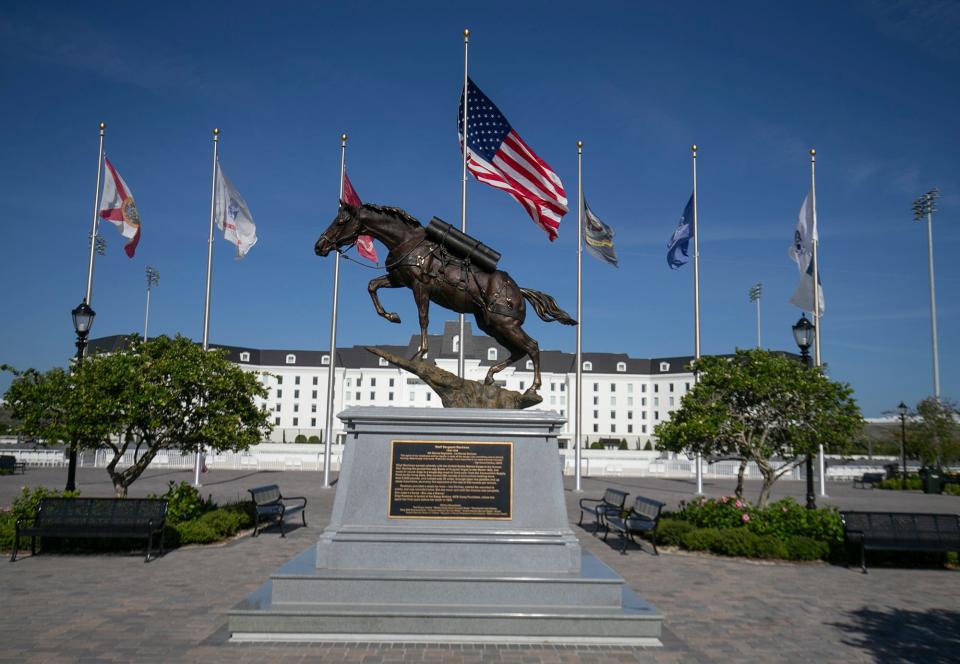
"Over the last two years, the Ocala metro has jumped up six spots to be the 142nd largest metro (MSA) out of 392 in our country," Sheilley said. "That means in this last year the Ocala Metro surpassed the four-county Tallahassee (MSA)."
Sheilley said that Marion is one of the Top 25 fastest growing based on percentage growth and was 38th fastest in terms of actual numbers. He also noted that U-Haul and Pods rank Marion in the Top 25 in terms of one-way destinations.
Marion's fastest growing population segment continues to be people ages 30 to 39. Sheilley said with the addition of the World Equestrian Center and Florida Aquatics Swimming & Training facility, the job growth is diverse.
"Here are some quick numbers: (Marion) household income grew a third faster than the U.S. average from 2016-20," Sheilley said, adding that household income has risen from $32,000 per year about a decade ago to nearly $50,000.
Curry said he has been getting angry emails about the need to stop growth. Marion, which is larger in size than Rhode Island, has 125,000 acres earmarked for its urban growth boundary. Marion County is 1,663 square miles, or 1 million acres.
"That's about 12% of our county," Curry noted. "The farmland preservation is around 198,000 acres and combined the national forests, including lakes, rivers, streams and protected areas is 500,000 estimated acres."
He continued about the emails, repeating one: "If you don't stop growth, I'm not voting for you anymore."
"Well, you're not gonna vote for me anymore because I can't stop growth," Curry said. "I don't want to stop it, I want to control it. I want to make it to where it fits in our community and it fits within the vision of the commission. And then we explain that vision so that people aren't afraid of it."
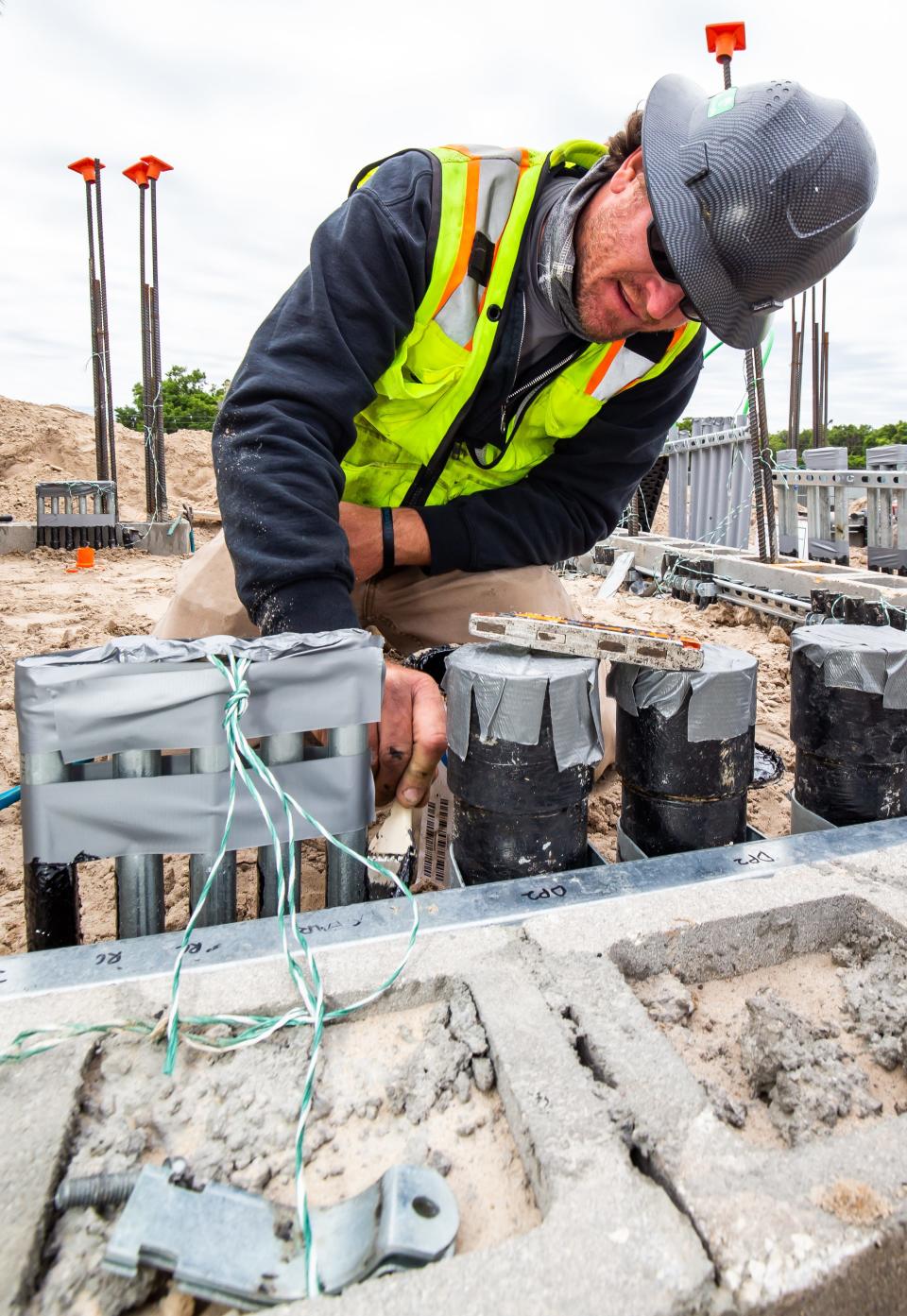
School leader addressed commission, thanking them for working together
Nancy Thrower, Marion County School Board member, first thanked commissioners "for everything that you're doing to help our community prosper."
"And I've really enjoyed the collaboration with Commissioner Stone working on updating a draft to the interlocal agreement," Thrower said of a document used to help schools collect money to build schools.
"It's going to be really important to continue that communication very closely because we do rise as a community together," Thrower noted. "And the last thing we need to do is duplicate services."
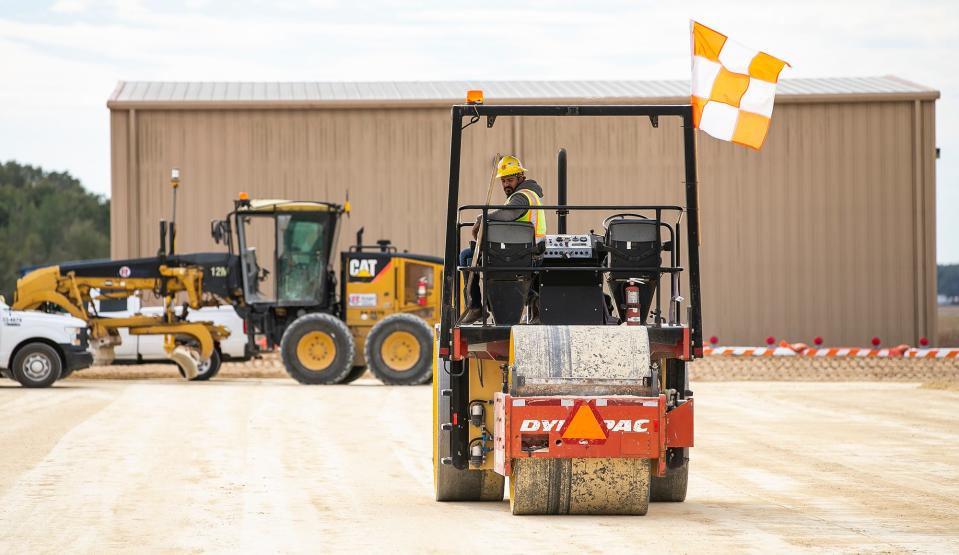
Thrower said the community is looking at all the government bodies to collaborate so that growth is managed well. Thrower said after hearing all of the numbers at Monday's meeting that "there's definitely a lot of work to be done."
"But I'm certainly excited to continue to do it side by side with all of you and I know that the school board feels the same way and the future is bright here," Thrower noted. "So I appreciate everything that you all do."
Zalak said once the school board works out a capital funding plan that more intergovernmental meetings will be necessary.
"I'd love to get back together and a joint workshop about this situation because I think it's really important to figure that out," Zalak noted.
Joe Callahan can be reached at (352) 817-1750 or at joe.callahan@starbanner.com. Follow him on Twitter @JoeOcalaNews.
This article originally appeared on Ocala Star-Banner: Ocala/Marion County, Florida addresses growth-related concerns

